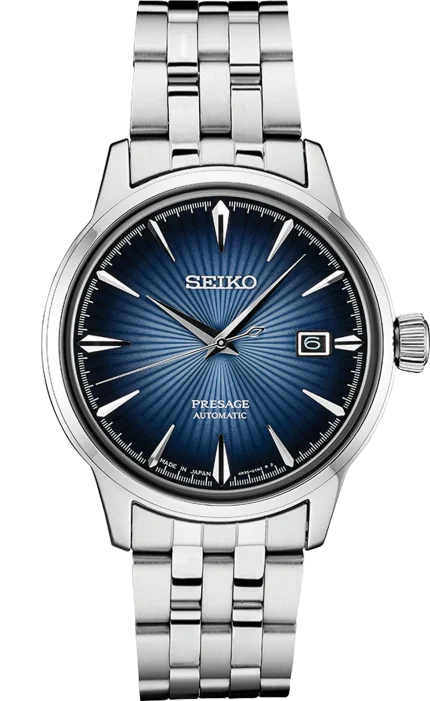In the realm of horology, few names resonate as profoundly as Seiko. What began as a modest watch repair shop in Tokyo has blossomed into one of the most influential and innovative watchmakers in the world. Seiko's journey from local craftsmanship to global prestige is a story of vision, resilience, and technological mastery.
Humble Beginnings in Tokyo
Seiko’s story began in 1881 when a 21-year-old Seiko 5 Sports entrepreneur named Kintarō Hattori opened a shop selling and repairing clocks in Tokyo’s Ginza district. At a time when Japan was modernizing rapidly during the Meiji era, Hattori saw an opportunity to blend traditional Japanese craftsmanship with Western technological advancements. In 1892, he founded the Seikosha factory, where he began producing wall clocks. The name "Seikosha" roughly translates to "House of Exquisite Workmanship"—a motto that would define the company’s philosophy for decades to come.
In 1913, Seikosha produced Japan’s first domestically made wristwatch, the Laurel, marking a pivotal moment in the country’s watchmaking history. Despite limited resources and technological challenges, the success of the Laurel signaled Japan’s entry into the world of precision timekeeping.
The Birth of the Seiko Brand
The brand name “Seiko,” meaning "exquisite" or "success" in Japanese, was first used in 1924. It symbolized a new era for the company and a commitment to excellence in watchmaking. Over the following decades, Seiko expanded its range and capabilities, steadily establishing itself as a serious contender in both domestic and international markets.
Seiko’s big international breakthrough came in the 1960s. In 1964, it became the official timekeeper of the Tokyo Olympic Games, showcasing its precision on a global stage. This recognition catapulted Seiko’s reputation, proving it could stand toe-to-toe with established Swiss watchmakers.
Revolutionizing Timekeeping
One of Seiko’s most significant contributions to horology was the introduction of the world’s first quartz wristwatch, the Seiko Quartz Astron, Seiko Watches on December 25, 1969. This moment revolutionized the industry. Unlike traditional mechanical watches, quartz watches offered unprecedented accuracy and affordability. The Astron was a marvel of engineering, and while it initially came with a hefty price tag, its technology would soon become the industry standard.
This “Quartz Revolution”—also known as the “Quartz Crisis” by many Swiss watchmakers—reshaped the global watch industry. Seiko’s innovation disrupted long-standing traditions and forced many companies to adapt or close down. Yet, it also democratized timekeeping, making high-precision watches accessible to a broader audience.
Expanding the Seiko Legacy
Seiko didn’t stop innovating. It introduced the first multi-function digital watch, the first TV watch, and the world’s first spring drive movement—a unique mechanism that combines the high torque of mechanical watches with the accuracy of quartz regulation. Each advancement solidified Seiko’s position as a leader not just in design but in pioneering technology.
The company also diversified its offerings. With collections ranging from the affordable Seiko 5 to the high-end Grand Seiko and Credor lines, Seiko managed to appeal to both casual wearers and serious collectors. Grand Seiko, in particular, earned a place alongside elite Swiss brands thanks to its meticulous craftsmanship, elegant aesthetics, and exceptional performance.
A Cultural and Global Icon
Seiko watches have made their mark not just through innovation, but also through culture. They’ve appeared in movies, been worn by James Bond, and have become favorite timepieces of astronauts, athletes, and artists alike. The brand represents reliability, precision, and value—attributes that have allowed it to earn a loyal following worldwide.
In recent years, Seiko has embraced its heritage more openly. The company has reissued classic models, honored its founders, and emphasized the traditional Japanese principles of craftsmanship, known as takumi. Meanwhile, it continues to push the boundaries with smartwatches and environmentally friendly solar-powered models.
Looking to the Future
As the watch industry evolves in the digital age, Seiko remains a symbol of innovation and tradition. Its dual commitment to cutting-edge technology and artisanal skill has allowed it to transcend fleeting trends and maintain enduring appeal. From a small Tokyo workshop to a global powerhouse, Seiko’s rise is a testament to what can be achieved when vision meets craftsmanship.
For watch enthusiasts and collectors, Seiko is more than a brand—it’s a legacy. And as it continues to innovate, one thing remains certain: the world will keep watching Seiko.
Astring Details
User Profile
- Full name
- Astring
- Email address
- tiyos43364@baxima.com
- Join Date
- 2025-06-04
- State
- City
- Pincode
- Address
- Follow us on Facebook
- Follow us on Twitter
- Website Name
- Bio

